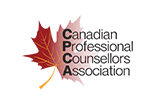In wellness counselling training, you’ll be exposed to a range of trusted counselling and coaching techniques. You will learn how to assess relationship systems and define problematic couple and family dynamics. These are skills that will help you succeed in your own wellness counselling career. If you choose to make a career out of counselling couples or families, your insights, compassion, and expertise will assist others to make positive changes. You can help partners foster loving and healthy relationships – or help them come to terms with their incompatibility and move down healthier, separate paths. Here’s our guide to starting out strong with a basic understanding of three key couples counselling concepts you’ll encounter in your wellness counselling training.
1. Triangulation in Wellness Counselling Training
Triangulation is a circumstance in which one or both partners won’t communicate directly with each another: instead they seek out a third person to act as a bridge or ‘middle man.’ Psychologists have long understood that stressful relationships and family dynamics can evolve into a situation where a third person (the third point of the triangle) provides emotional support, gives advice, or passes information back and forth. It’s unhealthy for a child or other family member to be pulled into triangulation, but a couple’s counsellor can assume this role with their expertise. Since counsellors and coaches are trained to be non-judgmental, clients often feel a safety confiding in them, even when their partners are in the room. “It allows people to voice what they cannot voice to one another,” explains couples counsellor Susan B. Winston, who writes for Psychology Today. This can help ignite progress in an emotional stand-off, allowing couples to communicate in a space that is “comfortable, and less threatening or embarrassing.”
2. Unraveling Enmeshment
One of the most important wellness counselling skills is teaching others how to take responsibility for themselves, their actions, and their ultimate happiness. A common obstacle to this (especially in a close two-person relationship) is enmeshment: when personal boundaries are so blurred that two people seem to ‘share’ emotions, thoughts, and more. “In enmeshment, people feel like their wellbeing is not complete unless they are their partner’s shadow,” explains psychologist Randi Kreger. “But then many resent that fact when they want some individual space.” This co-dependence becomes unhealthy when it leads to mutual over-involvement, and prevents the personal growth of one or both parties. As a couples’ counsellor, you’ll be able to help couples be comfortable apart without falling apart, and maintain/develop their own sense of self in healthy ways.
3. Recognizing Disengagement
Disengagement can refer to a few different processes in the wellness counsellor training field. The act of clients distancing themselves from toxic relationships can be called disengagement, as can clients neglecting to participate in healthy relationships and experiences. Have you ever found yourself in an experience where you wish you could just withdraw, curl up, and disappear? That is an example of disengagement, a survival tactic meant to preserve our psyches from harm. Like any coping mechanism, when it progresses to the point where a client’s quality of life is compromised, professional help is required. As a counselling professional, you will assist vulnerable people to become engaged with their own fulfilling lives, or to disengage from problematic relationships. Would you like to become a wellness counsellor? See Rhodes Wellness College’s programs for more information about starting this rewarding career. Read More









